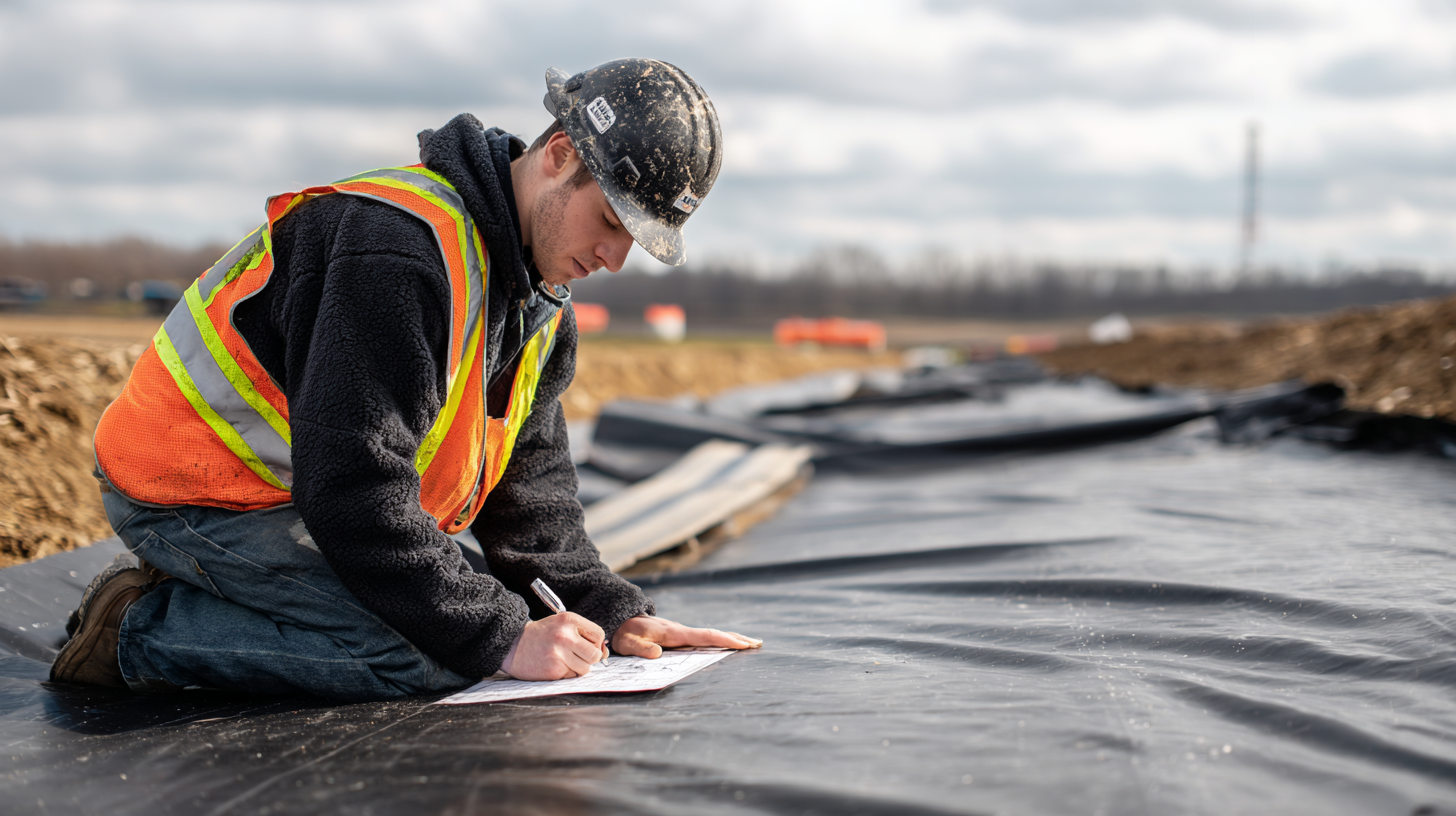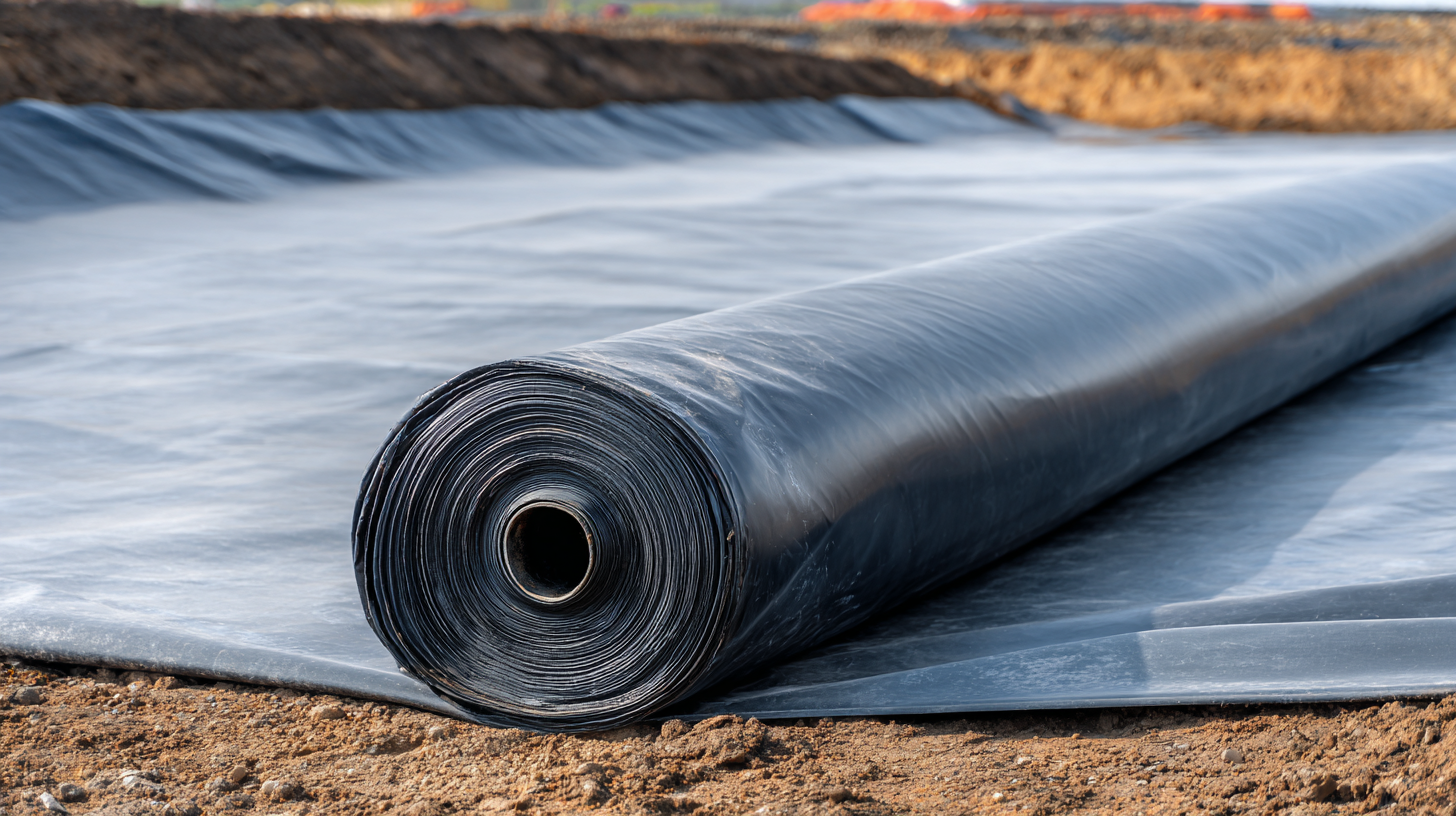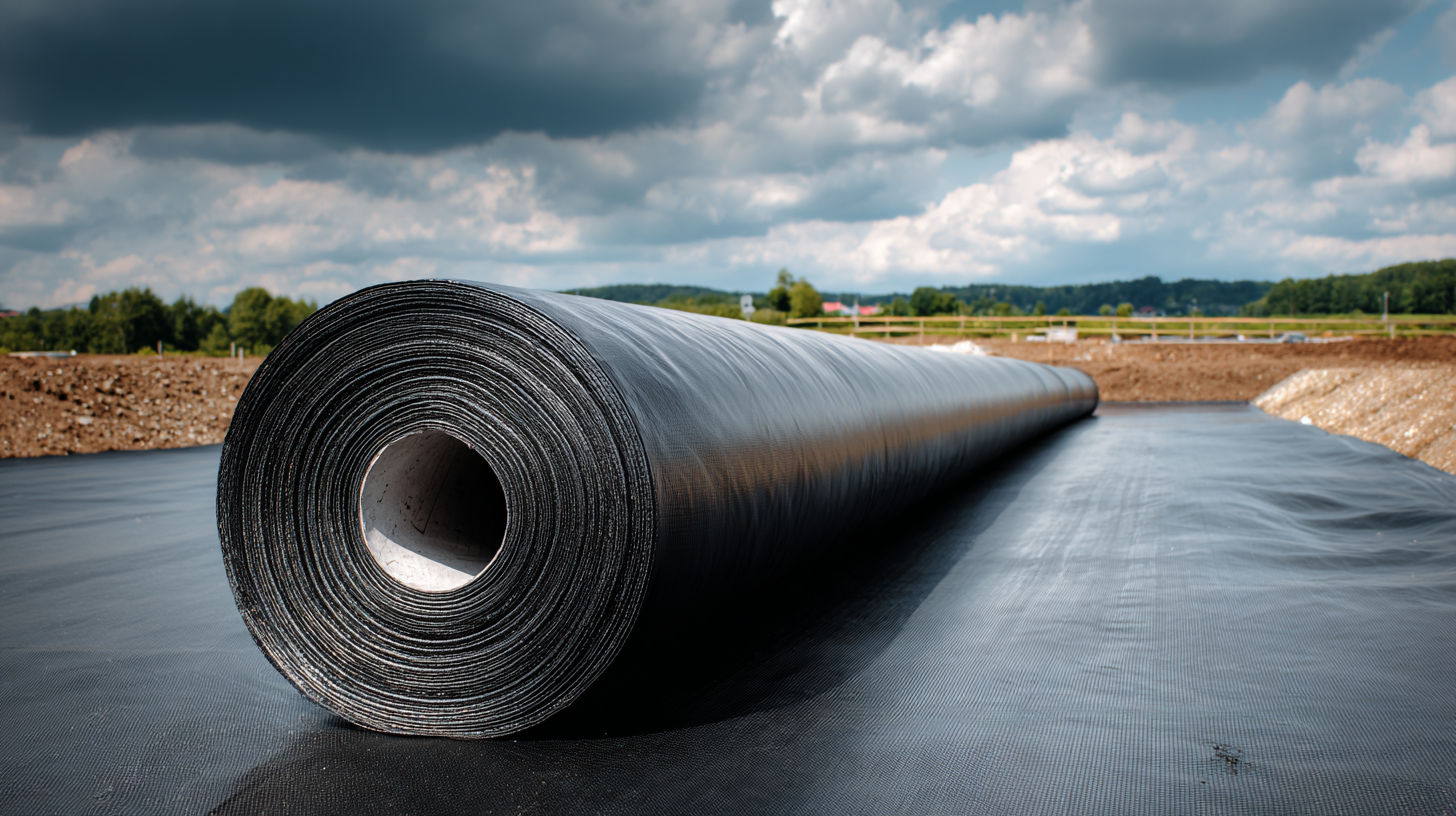Inquiry
Form loading...
- Phone
- E-mail
Choosing the right Hdpe Geomembrane is crucial for the success of any project involving containment, landfill, or waterproofing applications. As the industry moves towards 2025, advancements in technology are set to redefine the performance and sustainability of geomembranes. According to a recent report by MarketsandMarkets, the global geomembrane market size is expected to grow from USD 3.3 billion in 2020 to USD 5.2 billion by 2025, driven by increasing environmental regulations and a rise in large-scale infrastructural developments. This growth highlights the importance of selecting high-quality materials that meet stringent standards. In this blog, we will provide your ultimate checklist for assessing the best Hdpe Geomembrane types, including innovative alternatives that promise enhanced durability and effectiveness, ensuring your project meets both current and future demands.

 HDPE (High-Density Polyethylene) geomembranes play a critical role in modern construction and environmental projects. These durable liners provide an effective barrier against waste, chemicals, and water, making them essential for landfills, ponds, and containment structures. Understanding their importance is crucial for project managers, as the right geomembrane can significantly influence the project's success and sustainability.
HDPE (High-Density Polyethylene) geomembranes play a critical role in modern construction and environmental projects. These durable liners provide an effective barrier against waste, chemicals, and water, making them essential for landfills, ponds, and containment structures. Understanding their importance is crucial for project managers, as the right geomembrane can significantly influence the project's success and sustainability.
When selecting an HDPE geomembrane, consider the specific requirements of your project. First, assess the environmental conditions it will face, such as temperature fluctuations, UV exposure, and chemical resistance. This enables you to choose a geomembrane that not only meets but exceeds durability expectations. Additionally, look into the manufacturing processes to ensure you are getting a quality product that adheres to industry standards.
Another tip is to evaluate the installation methods available. Proper installation is as important as the geomembrane itself. Engage experienced professionals who understand the nuances of working with HDPE materials to prevent future issues like leaks and material degradation. Investing time in these details can lead to long-lasting results and contribute to the overall effectiveness of your project.
When selecting HDPE geomembranes for your project, several key factors should be considered to ensure optimal performance and longevity. The global HDPE packaging market is projected to grow significantly, with a value of approximately $18.9 billion in 2024, rising to $19.91 billion in 2025 and expected to reach $27.25 billion by 2032. This robust market indicates a strong demand for high-quality geomembranes that can withstand various environmental challenges.
One crucial factor to evaluate is the thickness of the geomembrane. Thicker materials generally provide better durability and resistance to punctures and tears. Additionally, consider the material's chemical resistance, especially if it will be exposed to aggressive substances. Tips for choosing the right geomembrane include researching manufacturers' specifications and seeking recommendations based on project requirements.
Another factor to address is the installation method, as it can significantly impact the geomembrane's performance. Proper installation is critical to avoiding leaks and ensuring a long lifespan. For enhanced efficiency, look for geomembranes that come with installation guidelines or training support. Always ensure the selected geomembrane complies with relevant standards and regulations for your specific application.
When selecting the best HDPE geomembrane for your project, it’s crucial to evaluate the environmental impact of the materials involved.
High-Density Polyethylene (HDPE) geomembranes are known for their durability and resistance to chemicals, making them a popular choice for various applications,
such as landfills and wastewater containment. However, understanding the lifecycle of these materials is essential. From production and transportation to installation and eventual disposal,
every stage has ecological implications that must be considered.
One key aspect to evaluate is the carbon footprint associated with HDPE production. The manufacturing processes can contribute to greenhouse gas emissions,
and sourcing the raw materials also has its environmental costs. Additionally, while HDPE is recyclable, many geomembranes end up in landfills post-use, posing long-term environmental challenges.
By choosing suppliers with sustainable practices and eco-friendly materials, project managers can mitigate these negative impacts. Exploring alternatives,
like bioplastics or other eco-conscious geomembranes, may also offer pathways to reduce overall environmental harm, ensuring that project goals align with sustainability initiatives.

When it comes to selecting the right geomembrane for your project, understanding the differences between HDPE (High-Density Polyethylene) and other options is crucial. HDPE geomembranes are renowned for their superior tensile strength and durability, making them ideal for applications that require robust waterproofing solutions. Their resistance to UV radiation and many chemicals allows them to perform reliably in harsh environments, which is a significant advantage over alternatives like PVC or EPDM.
On the other hand, while PVC geomembranes are typically more flexible and easier to install, they may not provide the same long-term durability as HDPE. Additionally, EPDM, although excellent for certain applications due to its elasticity, could fall short in terms of mechanical strength when compared to HDPE. Each material has its unique properties and suitability depending on the specific project requirements, so conducting a comparative analysis is essential to make an informed decision.
Understanding these differences will help you choose a geomembrane that not only meets your technical needs but also aligns with budgetary considerations and environmental conditions.
When selecting the best HDPE geomembrane for your project, it's crucial to consider maintenance and longevity to ensure its durability. According to the Geosynthetics Institute, proper installation and regular inspections can extend the lifespan of geomembranes significantly, often exceeding 30 years when appropriately maintained. Factors such as UV exposure, temperature fluctuations, and chemical interactions can compromise the integrity of the materials over time, highlighting the necessity of regular maintenance protocols.
Implementing a comprehensive maintenance plan can mitigate potential risks. For instance, a report from the International Geosynthetics Society indicates that geomembranes subjected to harsh environmental conditions without proper care showed a degradation rate of up to 15% over ten years. Regular monitoring for punctures, tears, or chemical damage is essential, as early detection can prevent costly repairs and extend the product's life. Additionally, utilizing protective layers during installation can provide added defense against physical and environmental stressors, ensuring that your HDPE geomembrane remains functional and effective throughout its intended lifespan.
